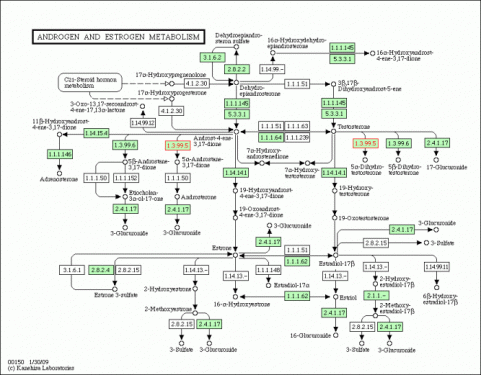This web page was produced as an assignment for Gen677 at UW-Madison Spring 2009.
Profile Structure Homology Phylogeny
3-oxo-5-alpha-steroid 4-dehydrogenase (SRD5A2) functions in mammalian bodies to transform testosterone to dihydrotestosterone (DHT). It is a membrane bound enzyme , particularly to the Endoplasmic Reticulum. 254 amino acids are linked to form this enzyme.
Accession #:NP_000339.2
GI #: 39812447
Sequence: MQVQCQQSPVLAGSATLVALGALALYVAKPSGYGKHTESLKPAATRL
PARAAWFLQELPSFAVPAGILARQPLSLFGPPGTVLLGLFCLHYFHRTFVYSLLNRG
RPYPAILILRGTAFCTGNGVLQGYYLIYCAEYPDGWYTDIRFSLGVFLFILGMGINIH
SDYILRQLRKPGEISYRIPQGGLFTYVSGANFLGEIIEWIGYALATWSLPALAFAFFS
LCFLGLRAFHHHRFYLKMFEDYPKSRKALIPFIF
Information from GeneCard
The molecular weight is estimated to be 28407 kDa and the isoelectric point is 9.7. (from Expasy) This enzyme is known to be active at a slightly acidic pH. At a pH level lower than its isoelectric point, this protein must have a net positive charge in its most active form (Uniprot).
Reaction Diagram (from BRENDA)
The general reaction of this class of enzymes requires a reduced cofactor (NADPH) to carry out the reduction of testosterone. The entire pathway in which this enzyme functions is also shown below. It is important that SRD5A2 is active in both males and females and therefore acts on estrogen as well as testosterone
References
1. Expasy
2. Uniprot
3. Chang, A. et al. BRENDA, AMENDA, and FRENDA the enzyme information system: new content and tools in 2009. 2009. Nucleic Acids Res. 37:D588-D592. BRENDA
4. GenomeNet


